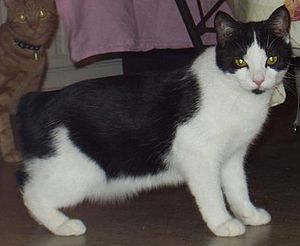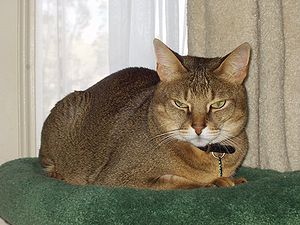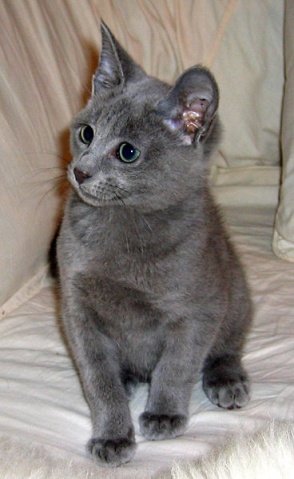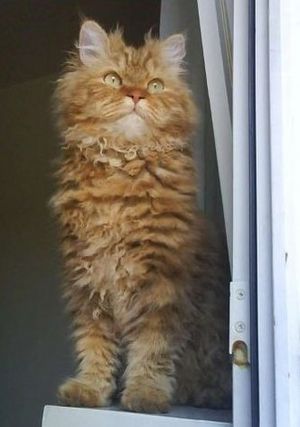 |
| Vital Statistics: |
| Place of Origin: England |
| Coat Type: short, dense, glossy |
| Color: all cat colors |
| Temperament: intelligent, playful, affectionate, good with children & dogs |
Cat of the Month for December
Manx typically have no tail or just a stub. This playful cat loves to jump high and gets along with dogs.
Where does the Manx come from?
There are several theories on the origin of the Manx. Possibly, in the middle of the 1500s, a ship of the Spanish Armada was wrecked off the coast of the Isle of Man. There were tailless cats on board who swam ashore and began the Manx line. They arrived in America in the 1930s. The original mutation probably occurred many years ago.
What does the Manx look like?
The distinctive trait of the Manx is that it has no tail. Actually they can be tailless, have a small stub or have a tail several inches long. The Manx’s body is well muscled and round. Its head and cheeks are also round and it has the appearance of having jowls. The back legs are much longer than the front legs causing its gait to be somewhat rabbit like. Eyes are large and round, set at a slight angle to the nose. The double coat is short, dense and glossy. There is a long coated variety as well. The coat comes in many colors.
Does the Manx make a good pet?
The Manx is very playful and loves lots of attention. They are totally at home with dogs and can even learn tricks. They are able to jump very high. The intelligent Manx makes a charming and lovable family pet.
Where can I adopt a Manx?
Most purebred rescue organizations can direct you as to where to find a Manx to adopt. You might check with your local shelter as they will sometimes have purebred cats to adopt.
Possible Health Issues
Spinal defects due to lack of tail, area is shortened.



